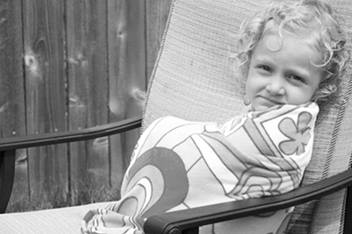Lawn Mower Safety
As the weather begins to warm up and new life starts to grow, the familiar sound of lawn mowers can be heard throughout the neighborhood. Oftentimes, it is a teen who mows the lawn as a chore or to earn cash. However, lawn mowers can be very dangerous, and thousands of children suffer severe injuries from lawn mowers every year. Parents need to understand that most of the injuries from lawn mowers can be prevented by following a few simple steps.
Lawn Mower-Related Injury Facts
- More than 8,490 children younger than 18 years are treated in emergency departments for lawn mower-related injuries each year.
- Usually the victims are older children or teens, but one in four injuries occurs to children younger than 6 years.
- Almost half of the injuries to children younger than 6 years are burns to the hands. This usually happens when the child touches a hot motor.
- Bystanders are also injured by lawn mowers. This can happen if the lawn mower ejects debris or if someone on a ride-on mower backs up over a child.
- Lawn mower-related injuries can be devastating. They can result in serious injuries, amputations or even death.
- Common lawn mower-related injuries are deep cuts; loss of fingers, hands, toes, or feet; broken and dislocated bones; burns; eye injuries; soft tissue damage; and sprains or strains.
Prevention Tips
- Teach and supervise teens. Children should be at least 12 years old to operate a push mower and at least 16 years old before using a ride-on mower. An adult should supervise teens before they are allowed to operate a lawn mower on their own.
- Kid-free zone. Children should never be passengers on ride-on mowers and children younger than 6 years of age should be kept indoors during mowing. Never let children play on or near a lawn mower, even when it is not in use
- Before you mow. Pick up any stones or other objects in the grass. Objects thrown by a lawn mower can cause severe eye and other injuries. Put on protective eyewear and make sure you are wearing sturdy shoes.
- While you mow. When using a walk-behind lawn mower, use a mower with a control that stops it from moving forward if the handle is released. Always mow going forward. If you absolutely have to mow in reverse, always look behind you before you start backing up.
- Turn it off. Wait for the blades to stop completely before removing the grass catcher, unclogging the discharge chute, or crossing gravel roads.
Other Lawn Care Safety Tips
- Chemicals, cleaners, gas, car fluids, pesticides and fertilizers can be poisonous. Always tightly replace the lids of poisonous products and lock them up out of sight and reach of children.
- If your lawn has been treated with pesticides or fertilizer, do not let children play on it for at least 48 hours.
Additional Lawn Mower Safety Resources
- Home Safety Series: Outside and the Yard
- Blog Post - August 2022
- Children treated for lawn mower-related injuries in US emergency departments, 1990-2014
- PubMed Abstract - June 2017
- Press Release - June 2017
- Blog Post - June 2017
- Epidemiology of lawn-mower-related injuries to children in the United States, 1990-2004
- PubMed Abstract - August 2006
- Lawn mower-related injuries to children
- PubMed Abstract - September 2005



